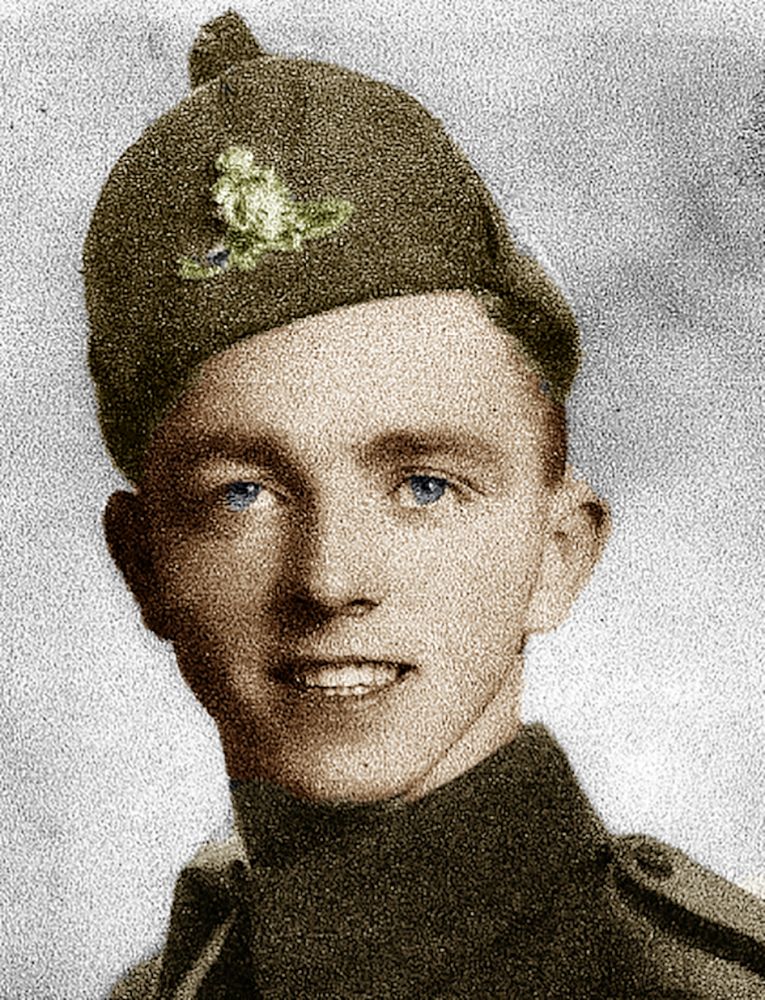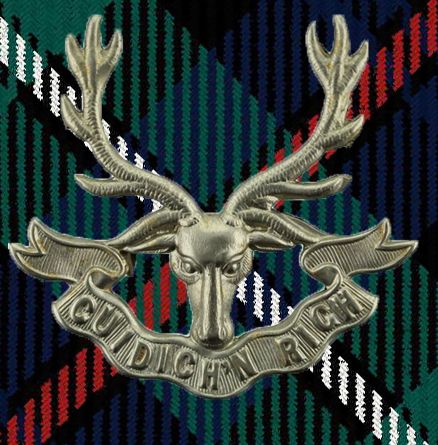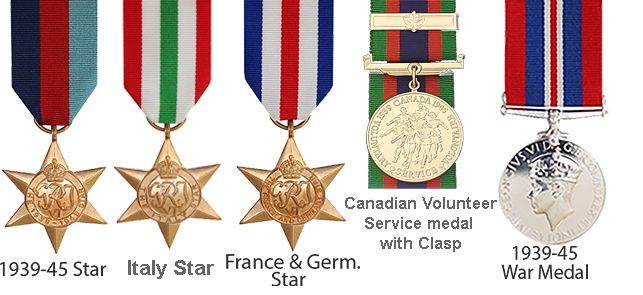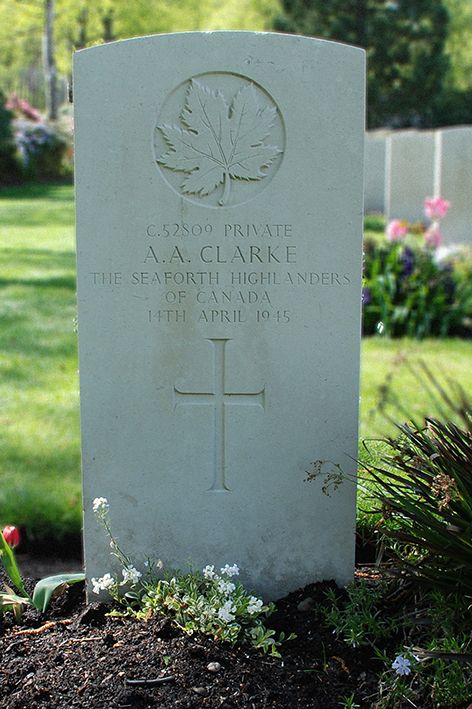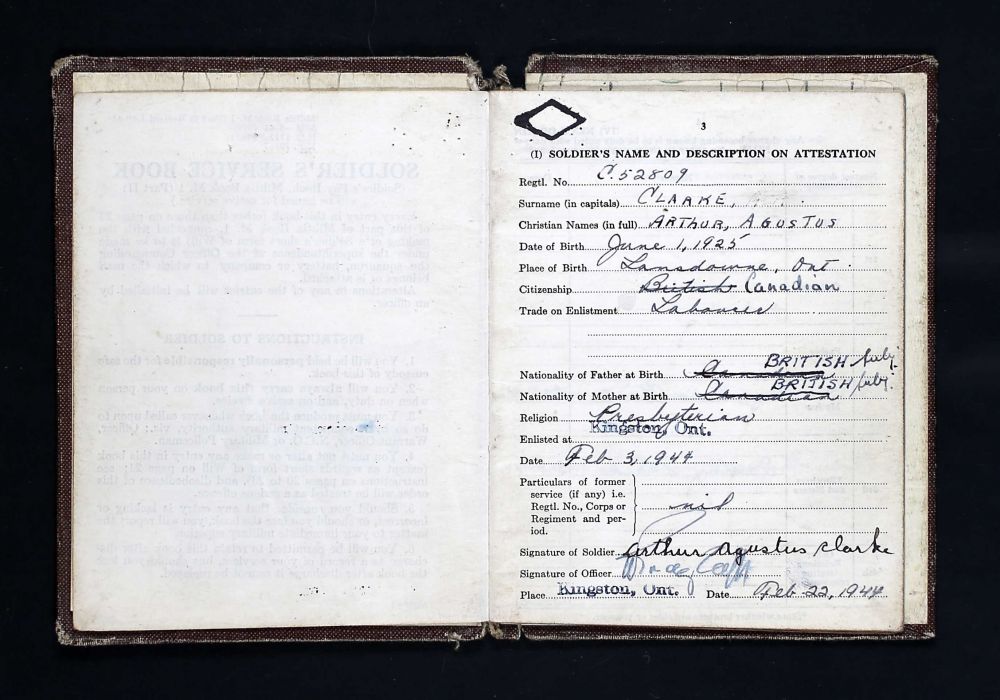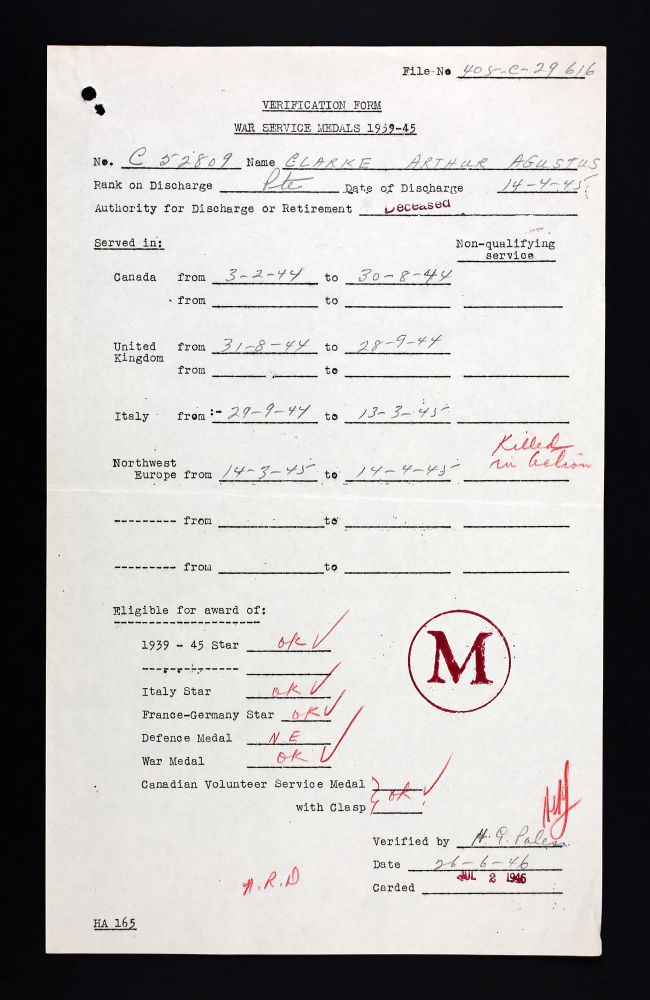private
Clarke, Arthur Agustus
Service nummer C/52809
Overleden 1945-04-14
Leeftijd 19
Seaforth Highlanders of Canada
Arthur Agustus Clarke
werd geboren op 1 juni 1925 in Lansdowne, Ontario als zoon van Gussie en Susie Clarke. Hij had twee zussen, Dorothy en Audrey. Zus Audrey kwam op jonge leeftijd te overlijden in 1928. Arthur stopte met school na groep 8, hij was toen 15 jaar.
Op 3 februari 1944 melde hij zich aan voor het leger in Kingston Ontario. Tot die tijd woonde hij met zijn zus Dorothy bij zijn moeder Susie Clarke in Outer Station, Kingston, Ontario en werkt bij Frontenac Floor and Wall Tile Company in Outer Station.
Na zijn training in Canada kwam hij op 4 september 1944 aan in Engeland. Hier bleef hij tot eind september en werd begin oktober 1944 met de Seaforth Highlanders of Canada ingezet in Italië. Op 23 feb 1945 raakte hij door een fragment van een ontploffende mortier gewond aan zijn nek en werd ter controle ingestuurd naar het ziekenhuis. Maar de verwondingen vielen mee en hij kon al snel het ziekenhuis weer verlaten.
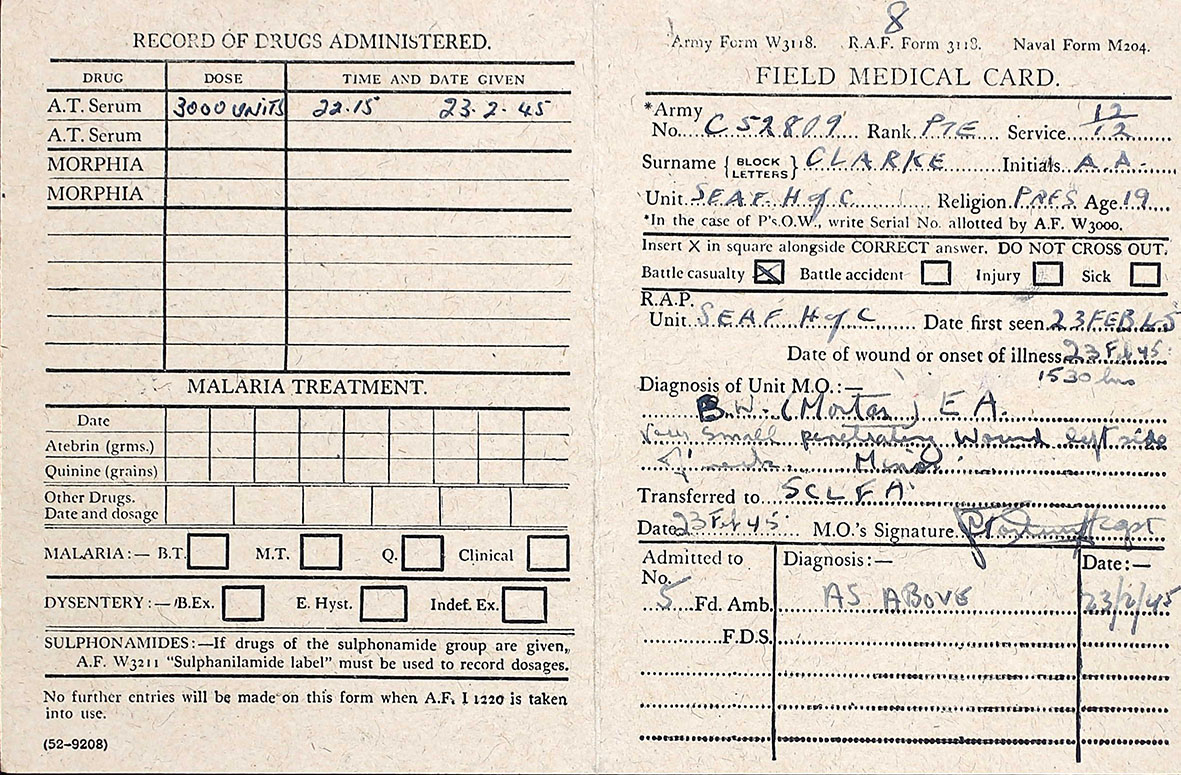
Clarke's medical card - (Bron: Canada, WWII Service Files of War Dead, 1939-1947)
Op 13 maart 1945 werd het regiment weer per schip verplaatst naar Frankrijk en ging vandaar noordwaarts om Nederland te helpen bevrijden. Via zuidelijk Nederland en Duitsland kwam het regiment op 7 april bij ‘s Heerenberg de grens over waarna zij noordelijk verder gingen richting Zutphen. Zutphen was aan de oostelijke kant van de IJssel inmiddels bevrijd, maar de Hoven aan de westkant werd nog steeds door de Duitsers bezet.
De Seaforth Highlanders of Canada kregen de opdracht om de Hoven te bevrijden, maar moesten eerst zien aan de andere kant van de IJssel te komen aangezien de brug bij Zutphen was opgeblazen. Deze oversteek vond plaats bij Gorssel op 11 april, ook wel bekend als "Operation Cannonshot".
Eenmaal aan de overkant werd links afgebogen richting Zutphen waar op 14 april de Hoven werd bevrijd. Bij deze gevechten kwam Arthur Agustus Clarke om het leven. Hij kreeg een tijdelijk graf aan de west kant van de IJssel ter hoogte van Gorssel. Op 4 januari 1946 werd hij herbegraven op de Canadian War Cemetery in Holten, graf I. D. 1.

Arthur Augustus Clarke
was born June 1, 1925 in Lansdowne, Ontario to Gussie and Susie Clarke. He had two sisters, Dorothy and Audrey. Sister Audrey died at a young age in 1928. Arthur finished school when he was 15 years old, after grade 8.
His parents were divorced and Arthur and his sister Dorothy stayed with their mother Susie Clarke and lived in Outer Station, Kingston, Ontario. On February 3, 1944, he enlisted in Kingston Ontario. Until then he worked at Frontenac Floor and Wall Tile Company in Outer Station.
After his training in Canada, he arrived in England on September 4, 1944. Here he remained until the end of September when he was deployed to Italy with the Seaforth Highlanders of Canada.
On Feb 23, 1945, he was injured in the neck by a fragment of an exploding morter and was sent to the hospital for a check-up. But the injuries were not too bad and he was soon able to leave the hospital

Clarke's medical card - (Bron: Canada, WWII Service Files of War Dead, 1939-1947)
On March 13, 1945, the regiment was moved by ship to France, from where they went to help liberate the Netherlands. Via the south of the Netherlands and Germany, the regiment crossed the border at 's-Heerenberg April 7 and continued north towards Zutphen.
Zutphen had been liberated on the eastern side of the IJssel, but the Hoven on the western side was still occupied by the Germans.
The Seaforth Highlanders of Canada were ordered to liberate the Hoven, but first had to get to the other side of the IJssel because the bridge at Zutphen had been blown up.
This crossing took place near Gorssel on April 11, also known as "Operation Cannonshot".
Once on the other side, they turned left towards Zutphen.
Private Arthur Augustus Clarke was killed April 14 during the liberation of de Hoven. He was given a temporary grave on the west side of the IJssel near Gorssel. On January 4, 1946 he was reburied at the Canadian War Cemetery in Holten, grave I. D. 1
